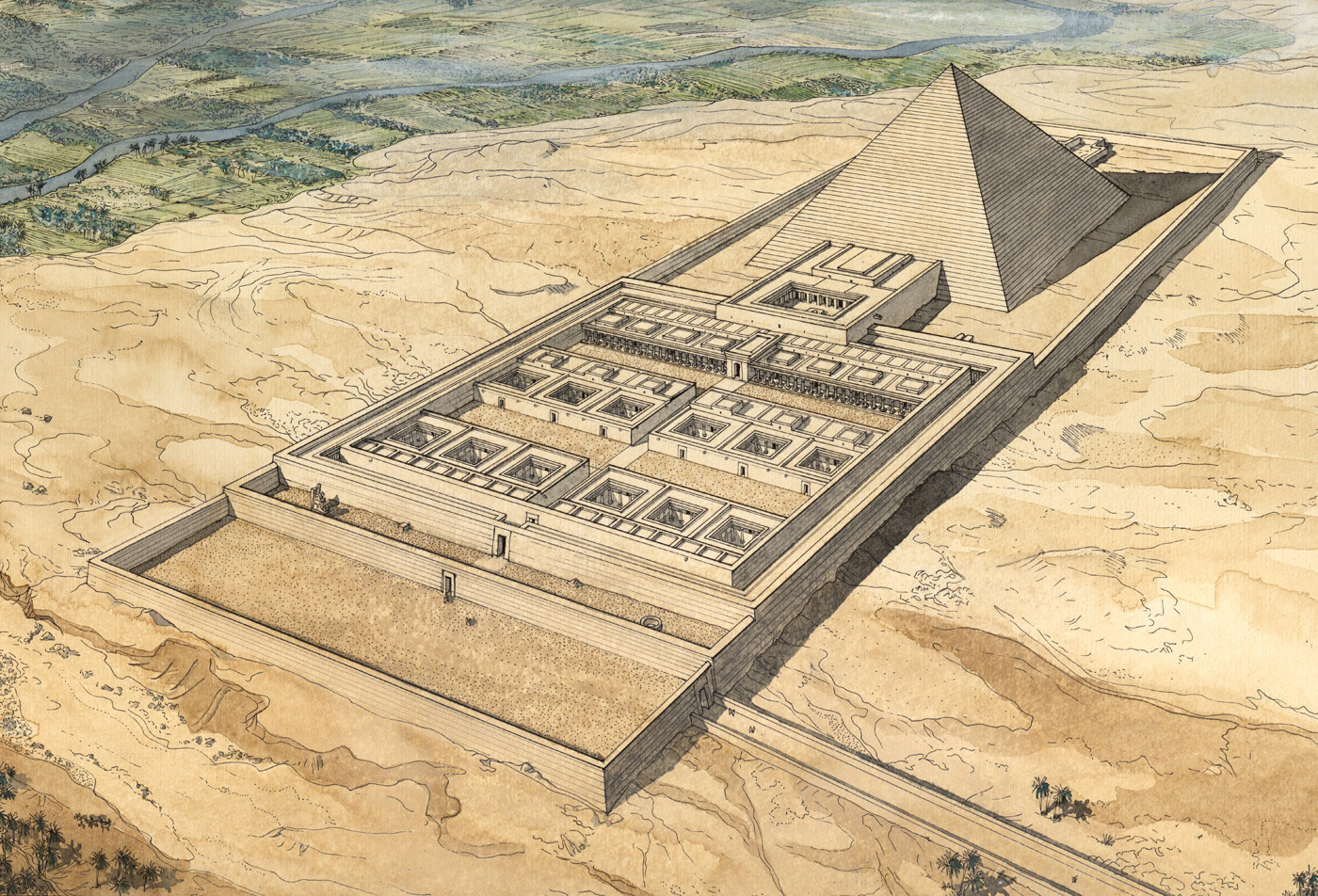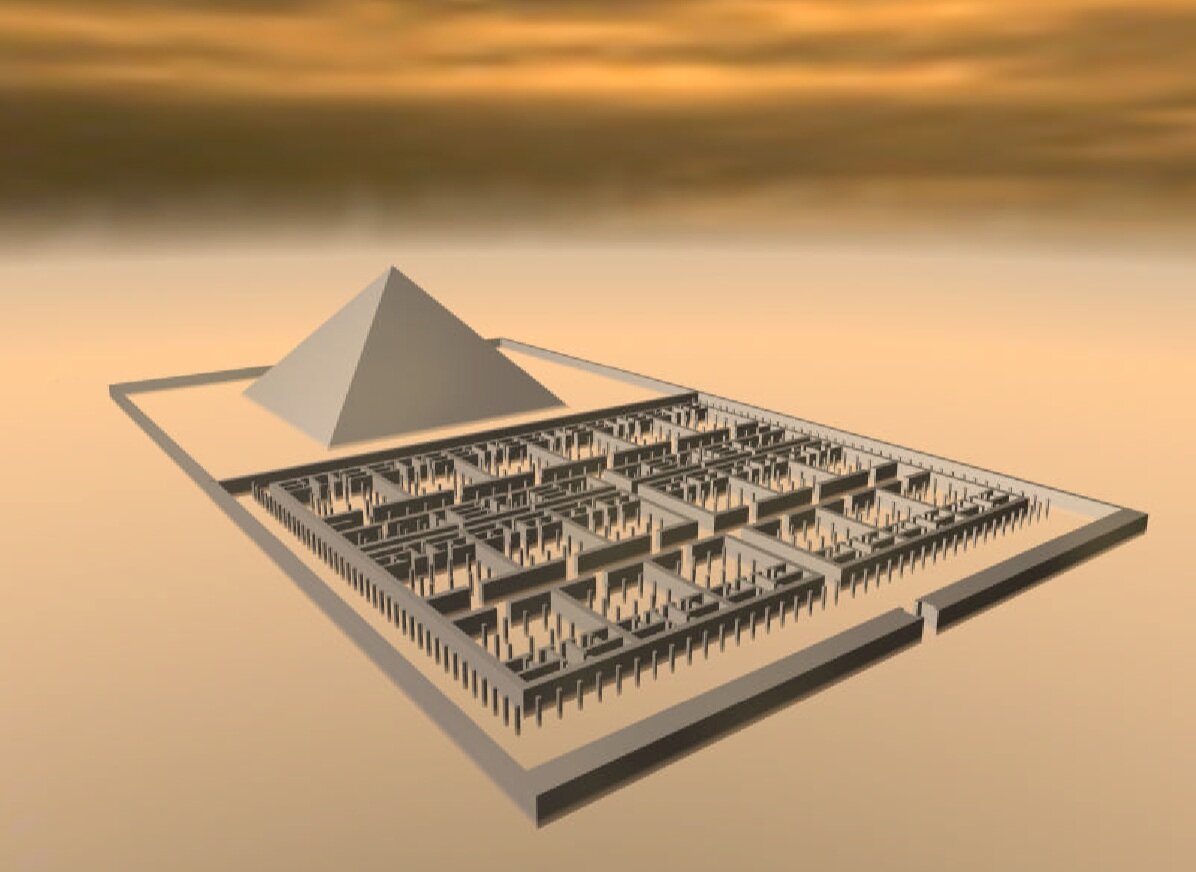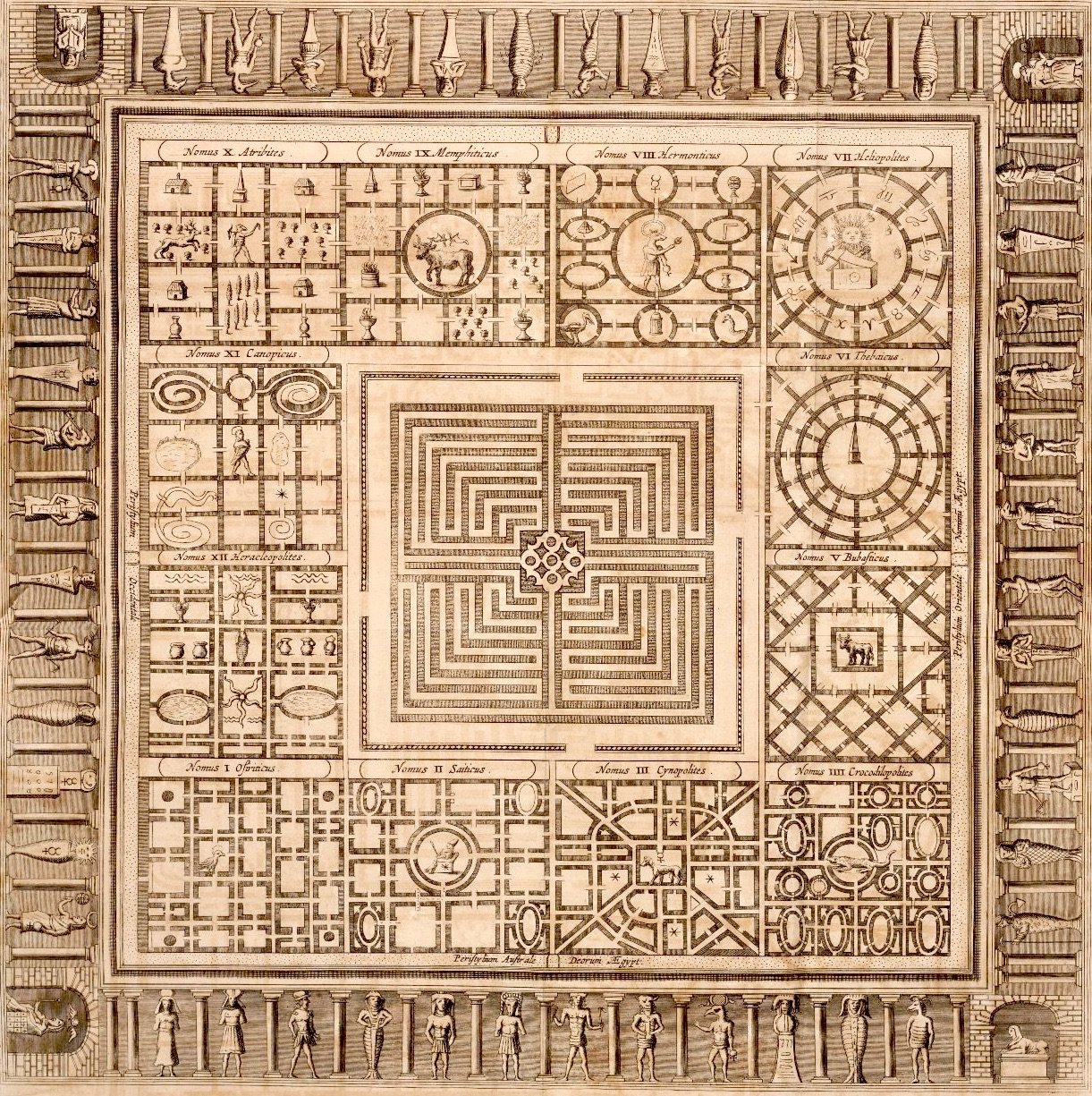The Pyramid and The Lost Labyrinth Of Hawara

The Pyramid of Hawara is attributed to the Pharaoh Amenemhet III of the 12th Dynasty in ancient Egypt and is located about 9 kilometers east of the oasis of Faiyuum.
Amenemhet III was the sixth Pharaoh of the 12th dynasty of the Old Kingdom and reigned around 1850 BCE.
Also referred to as the “Black Pyramid”, the pyramid of Hawara was built out of brick stones and then coated with limestone. It was thus radically different and much rawer if compared to the three pyramids at Giza.
When it was still standing, the Pyramid of Hawara was a large structure that was 58 meters high and each side of the base of the pyramid was around 100 meters long.
The most important thing about this archaeological site is not the pyramid itself though.
As a matter of fact, the sands beneath the structure hide something that could be one of the most groundbreaking complexes in all of Egypt: the Labyrinth of Hawara.
The Lost Labyrinth Of Hawara

In 2008, archaeologists discovered the remains of a “lost labyrinth” underground beneath the pyramid of Hawara.
The famous ancient historian Herodotus, in his book “Historiae”, wrote about this incredible megalithic work that baffled him so much.
Herodotus, as well as local Egyptian legends, claimed that this structure had countless rooms. However, these mysterious chambers have been considered a myth up until they were actually discovered.
Like Gobekli Tepe, the ‘Lost Labyrinth of Egypt’ is without a doubt one of those incredible ancient sites that still have to be excavated.
This mysterious underground complex of chambers was described by ancient historians such Strabo and Herodotus, who actually visited and wrote about the legendary labyrinth before it disappeared into history.
This underground structure was described as an extraordinary complex that could hold the key to mankind’s history, like details about unknown civilizations, and great empires that ruled the planet before history as we know it began.
This is an excerpt from the writings of Herodotus:
“The labyrinth is situated a little above the lake of Moiris and nearly opposite to that which is called the City of Crocodiles.
This I have actually seen, a work beyond words. For if anyone put together the buildings of the Greeks and display of their labours, they would seem lesser in both effort and expense to this labyrinth… Even the pyramids are beyond words, and each was equal to many and mighty works of the Greeks. Yet the labyrinth surpasses even the pyramids.
When one had entered the sacred enclosure, one found a temple surrounded by columns, 40 to each side, and this building had a roof made of a single stone, carved with panels and richly adorned with excellent paintings. It contained memorials of the homeland of each of the kings as well as of the temples and sacrifices carried out in it, all skillfully worked in paintings of the greatest beauty.
It has twelve courts covered in, with gates facing one another, six upon the North side and six upon the South, joining on one to another, and the same wall surrounds them all outside; and there are in it two kinds of chambers, the one kind below the ground and the other above upon these, three thousand in number, of each kind fifteen hundred.
[…]The upper set of chambers we ourselves saw, but the chambers underground we only heard about.
For the passages through the chambers, and the goings this way and that way through the courts, which were admirably adorned, afforded endless matter for marvel, as we went through from a court to the chambers to colonnades, and from the colonnades to other rooms, and then from the chambers again to other courts.
[…]Over the whole of these is a roof made of stone like the walls; and the walls are covered with figures carved upon them, each court being surrounded with pillars of white stone fitted together most perfectly; and at the end of the labyrinth, by the corner of it, there is a pyramid of fourty fathoms, upon which large figures are carved, and to this there is a way made under ground. Such is this labyrinth.” (Herodotus, Histories, Book II, 148).
In the 17th century German Jesuit scholar Athanasius Kircher tried to represent the enigmatic labyrinth based on the description made by Herodotus and other ancient writings:

Fast forward to 2008, when a group of researchers from Belgium and Egypt under the name Mataha expedition arrived to investigate the enigmatic legend and perhaps unearth the underground complex with the aid of ground penetrating technology.
The Belgian-Egyptian expedition was in fact able to confirm the presence of the underground temple not far from the Pyramid of Hawara.
Although it was discovered recently, one of the fathers of Egyptology, Flinders Petrie, already stumbled upon the structure in the 1800s by uncovering its megalithic remains.
However, believing the structure was demolished in ancient times in order to use its materials to build the nearby city of Shedyt, Petrie and his expedition didn’t excavate what could’ve been one of his most incredible discoveries.
The results of the expedition were published in 2008, shortly after the discovery in the scientific journal of the NRIAG, and the results of the research were discussed in a public lecture at the University of Gent, Belgium.
But the finding was suppressed since the Secretary-General of the Supreme Council of Antiquities (Egypt) put a hold to all further communications about the discovery due to Egyptian National Security sanctions.
Mr. Van Kerkwyk from Belgium stated that “the discovery was suppressed and today the incredible potential of this site is being slowly and irrevocably destroyed by both inaction by authorities and by the water table in the area that’s rising.”
As of today, the structure still has to be excavated.
